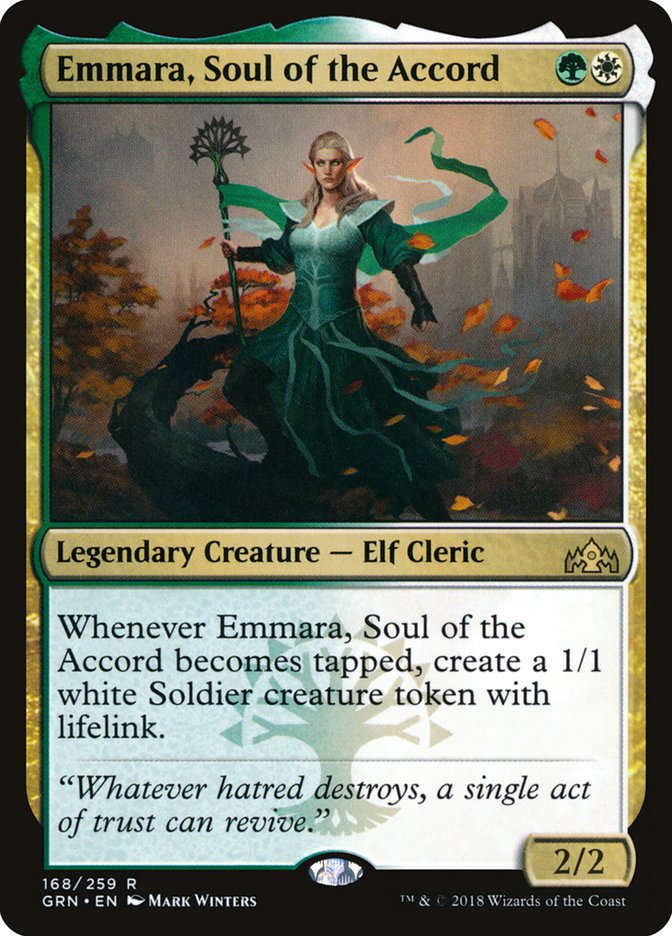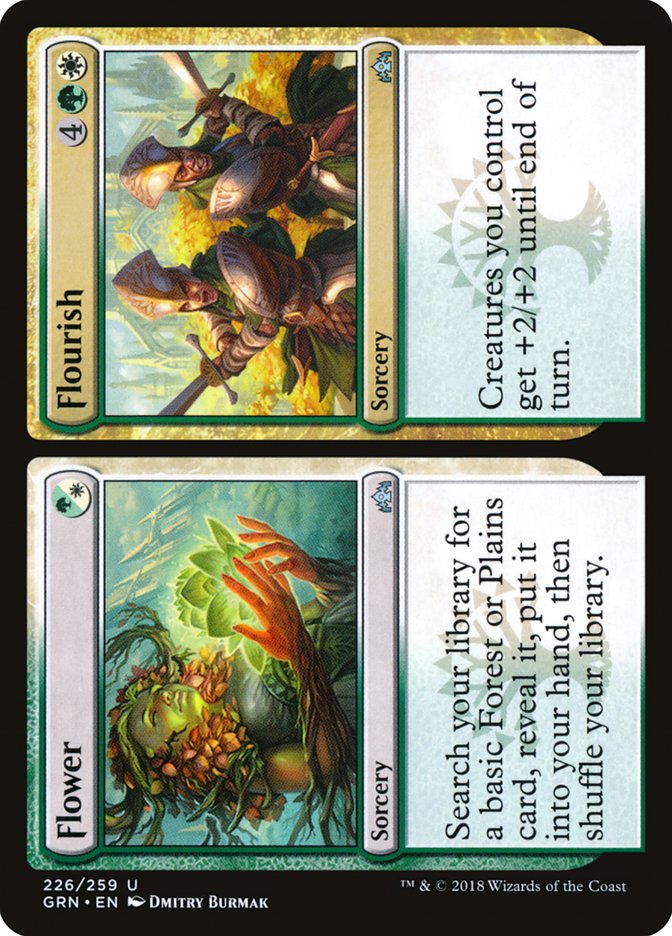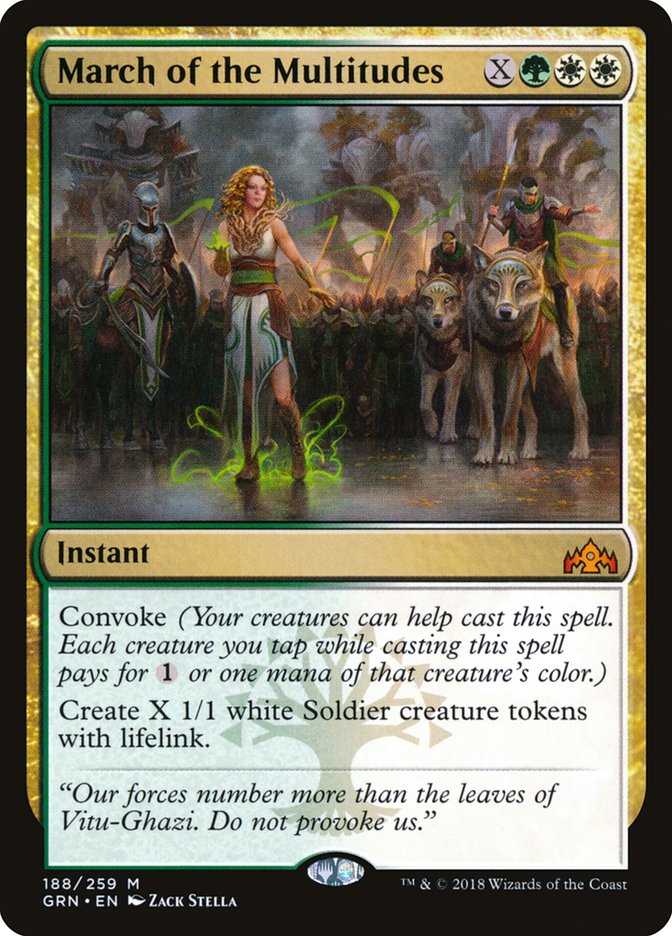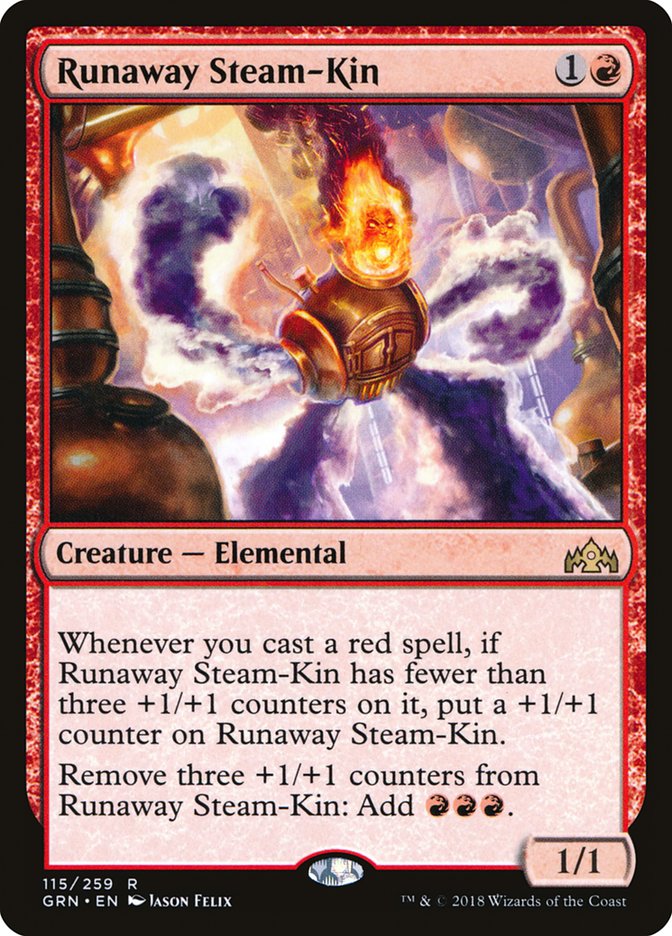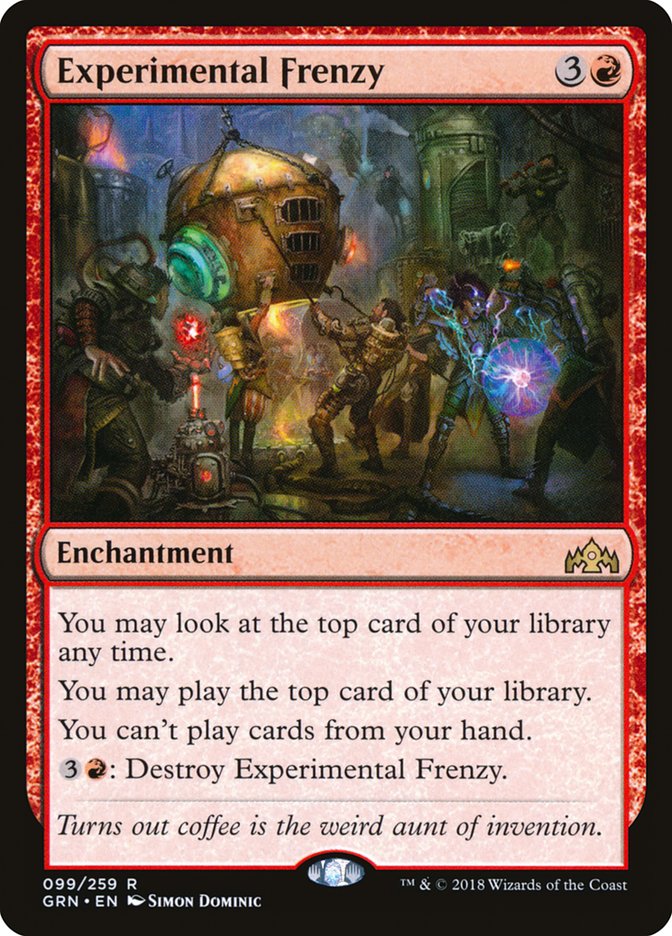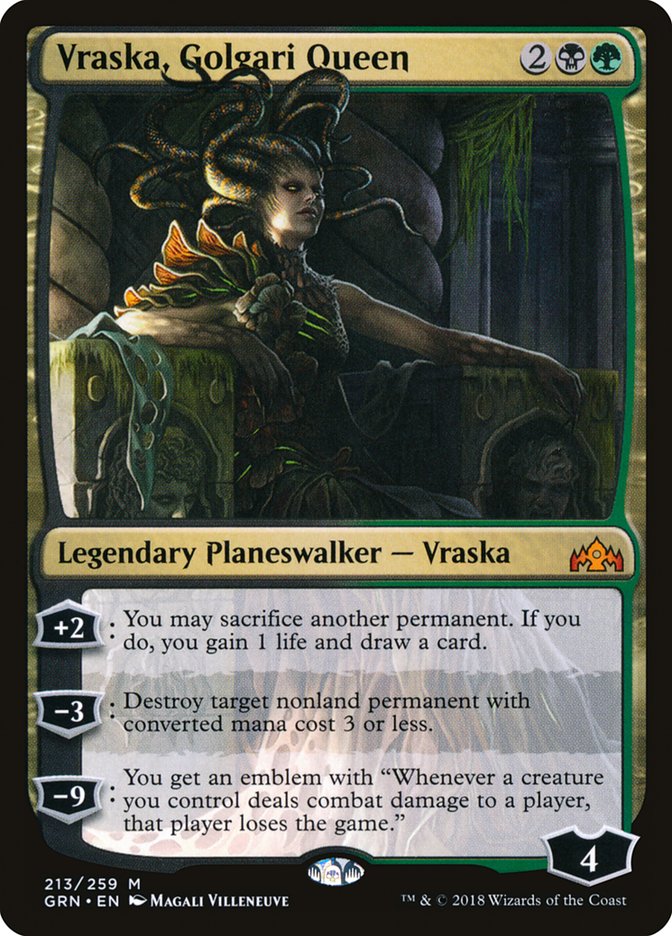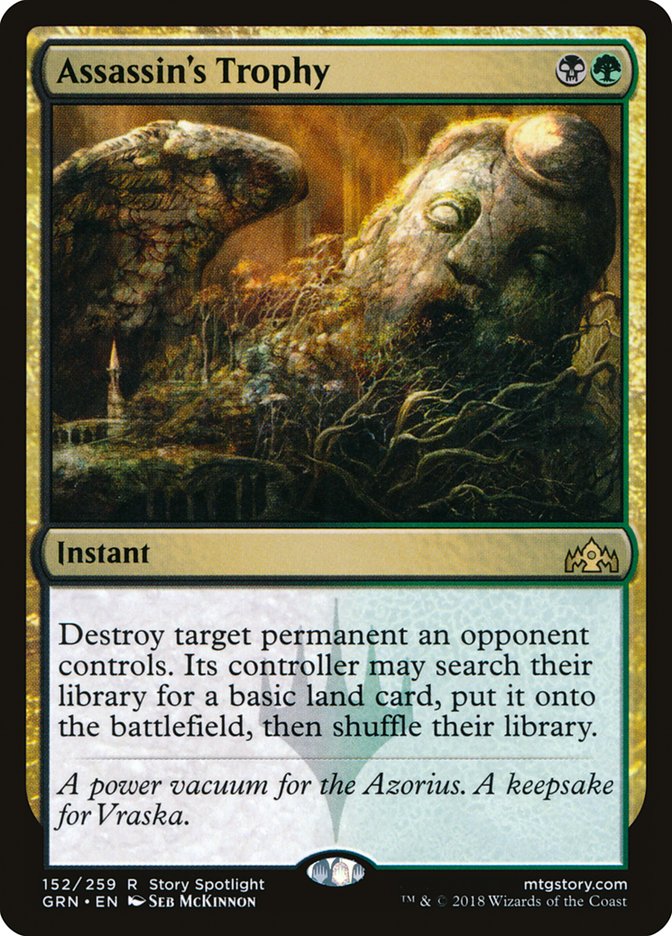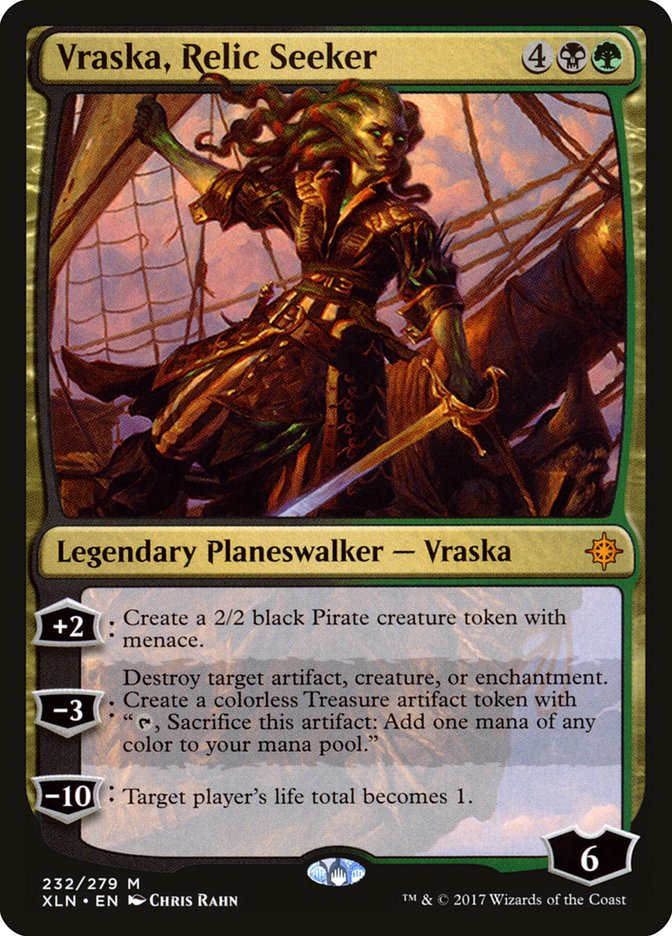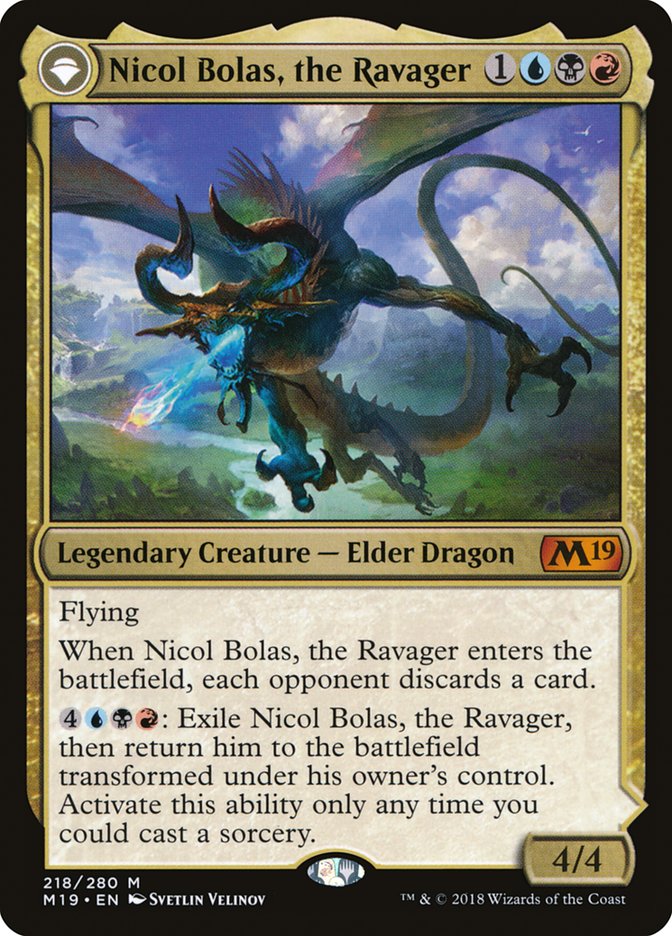Welcome to another edition of Fact or Fiction! Today, Shaheen Soorani, Bryan Gottlieb, and Emma Handy are here to render their verdicts on five statements about Guilds of Ravnica Standard. Don’t forget to vote for the winner at the end!
1. With a mirror in the finals of SCG Columbus, Selesnya Tokens is the clear deck to beat in Guilds of Ravnica Standard.
Shaheen Soorani: Fiction. The SCG Tour has been a fantastic indicator for new Standard metagames for as long as they’ve hosted tournaments on release weekend. Since SCG Columbus was a Team Constructed event, we must examine the outcome with a grain of salt. When two other formats impact the outcome of each match, the Standard data becomes fuzzy at best.
After watching it in action, Selesnya Tokens was an impressive breakout deck this weekend, even though it was only a piece of the Team Constructed puzzle. I knew five-mana enchantments weren’t going to break the archetype, but March of the Multitudes is no joke. I was always feeling very powerful after a nice Decree of Justice, but this creates an army of Soldiers with lifelink! Hardly a fair card when looking at it through a historical lens.
Because Selesnya Tokens split the finals of SCG Columbus, it will be on the radar, but not as the clear deck to beat. As much as it pains me to say, Mono-Red Aggro (or Boros Aggro) may be that number one deck moving into Guilds of Ravnica Standard. I was happy to see my boy Jonathan Rosum piloting a very similar Esper Control list that I wrote about prior to the new Standard launch, but I think Team Control has an uphill battle. Luckily, we are quite used to it!
Bryan Gottlieb: Fiction. Making definitive predictions about the state of Standard based on a tournament where 66.66% of the games are played in an entirely different format does not make much sense to me. Is Selesnya Tokens an entirely reasonable option in these early stages of the format? Absolutely. The deck scores high marks for both sheer power level of its cards and its strategic adaptability. Selesnya Tokens’s ability to play different roles in different matchups (and even throughout the course of a single match) is a huge feather in its cap.
A mirrored finals appearance in a Team Constructed tournament is not enough to sell me on its status as top dog though. If we move over to the Magic Online PTQ, we see a Top 8 devoid of Selesnya Tokens. If I’m declaring something the “deck to beat” in Standard, I expect it to be occupying a much larger metagame share in the tournament where finishes are more indicative of individual deck performance. Since that isn’t the case here, I’m passing on putting the crown on Selesnya Tokens.
Emma Handy: Fiction. The results of the Magic Online PTQ are very different from the results of SCG Columbus. On top of the normal spiel about it being hard to properly weigh results from multi-format team tournaments, the fact is, it’s hard to tell what exactly the best thing is right now. With so many decks starting to maindeck piles of modal sweepers (see: Find and Deafening Clarion), it’s safe to assume that go-wide creature decks will suffer, at least temporarily.
A strong part of what made Selesnya Tokens such a strong pick for SCG Columbus is that all its cards are consistently powerful. Without as much time to playtest as competitors in the PTQ, many players had to just pick something and run with it. At that point, picking a proactive deck full of powerful cards that are naturally good against aggressive creature decks is a no-brainer.
Selesnya Tokens being the “safe pick,” coupled with its positive matchup against the most popular deck in Day 2, is what catapulted it to the finals in the hands of great players, not it being inherently better than everything else available.
2. Though it lost many cards via rotation, Runaway Steam-Kin and Experimental Frenzy will make Mono-Red Aggro a top deck during Guilds of Ravnica Standard.
Shaheen Soorani: Fact. I don’t know how we ended up to the same place after a giant rotation, but here we are! It reminds me of that one Supernatural episode where they show “Hell” and it’s a long winding line where everyone waits, only to reach the front and it starts the line over again. Mono-Red has been the best deck, or close to it, for the last three October Standard resets and it feels like a line that we can’t escape from. This is a different flavor from the Rakdos deck that we just vanquished from Kaladesh Standard, but it feels more busted from the other side of the table. I’ve obviously been at a disadvantage due to my deck choice and that may force a shift from me if Mono-Red Aggro stays as dominant as I think it will.
Runaway Steam-Kin and Experimental Frenzy are both fantastic plug-ins to boost the previous Mono-Red Wizards deck that we saw a glimpse of before rotation. The burn is terrifying with three-damage burn spells flying for one or two mana, Risk Factor is as big of a problem as I feared, and Experimental Frenzy is a natural game-ending card for a control player trying to turn the corner. Cards like it in the past have been notoriously difficult to deal with because Mono-Red Aggro can use card advantage much more mana efficiently than other strategies.
Bryan Gottlieb: Fact. If you’ve been fortunate enough to cast an Experimental Frenzy in your lifetime, you’re likely aware that the card is completely bonkers. Once Runaway Steam-Kin gets in the mix, we start bordering on broken. My personal best Experimental Frenzy turn is plus eight cards. In Mono-Red Aggro. Are you kidding me?
Magical Christmas Land talk aside, I do think that both Experimental Frenzy and Runaway Steam-Kin present some unique deckbuilding challenges that people are only beginning to contemplate. While these cards are powerful enough to make the cut in any red deck, the Mono-Red Aggro list that ultimately rises to the top of the format will be focused on this duo and make appropriate deckbuilding concessions. Whether this means playing Treasure Map; Dismissive Pyromancer; Skirk Prospector; Squee, the Immortal; Midnight Reaper; or just a host of one-drops remains to be figured out. Once the work is done, expect Mono-Red Aggro to get its customary reign of terror underway until adaptations are made.
Emma Handy: Fact. I said it in last week’s “What We’d Play” and I’ll say it again: Runaway Steam-Kin is the truth. The card is playable in aggressive builds of red decks because it’s frequently a two-mana 4/4 and playable in the bigger red decks because it translates well to the late game and can even act as a way to enable double-spelling via its second ability.
Experimental Frenzy isn’t like the typical Outpost Siege-esque card advantage engines to which we’ve become accustomed over the last half-decade or so. It’s so much better. Rather than being priced into a single card or being restricted to playing on your own turn, Experimental Frenzy allows for both more flexibility and the higher ceiling of hitting multiple cards in a turn. Bigger red decks may shy away from it because it’s best cast while empty-handed, but that isn’t the case for Mono-Red Aggro.
Remember the colossal drawback associated with The Flame of Keld? Imagine something that played similarly – that’s to say, it more or less demands its caster be hellbent – but it hit the second chapter.
Every. Single. Turn.
3. Yamakiller’s Magic Online PTQ win with Golgari Midrange shows that Golgari is a top deck alongside Selesnya Tokens and Mono-Red Aggro.
Shaheen Soorani: Fiction. I don’t like to label any deck as a the “top” deck with minimal data. Assassin’s Trophy is too powerful of a card to be on the bench in Standard, so it’s inevitable that a Golgari deck rises to the top this early. Yamakiller’s deck is a nice start, but I think it needs to be slightly refined and put through more events to give it such a prestigious title.
From face value, Yamamkiller’s list looks strong against Mono-Red Aggro but very weak against Selesnya Tokens. I did notice the sideboard package to deal with pesky 1/1s, but it’s going to be tough to take two games even with the three sweepers. The maindeck of this Golgari Midrange deck contains weapons that look ineffective against tokens and even weaker against control strategies. I don’t want to rain on Yamakiller’s parade and huge props for the victory, but I don’t think this deck is at the top of the mountain with the others.
Bryan Gottlieb: Fact. My agreement with this statement extends beyond my belief in Yamakiller’s deck, which did a beautiful job leaning into one of the best end-games available in the format in The Eldest Reborn plus Golgari Findbroker. Simply scroll through the rest of the Magic Online PTQ results and you’ll see a bevy of Golgari lists scattered throughout the Top 16. And not only does Golgari deserve recognition for the high number of slots it claimed, it also did so while employing a diverse array of strategies. Gruesome Menagerie, Find // Finality, Wildgrowth Walker… Golgari can come at you from so many angles currently.
In my testing, there has been no card that has impressed me more than Find // Finality. I intend to say more about this amazing tool in my article later this week, but make no mistake about it, Find // Finality is a pillar of this format. And that’s what makes Yamakiller’s win even more impressive – they didn’t even play the card! This seems crazy to me, but the fact that Yamakiller found yet another way for the Golgari guild to carry the day just points to the fact that this color combination is the real deal and should be considered top-tier.
Emma Handy: Fiction. Golgari Midrange is just so… mopey.
There isn’t anything wrong with the deck, but it takes a lot of time to do anything. Sure, “everything is Elvish Visionary” is appealing, but the more decks become refined over the course of Standard, the worse the hardly synergistic piles of 60 cards will be.
Golgari Findbroker and The Eldest Reborn are super-neat, but the deck doesn’t seem to have much in terms of a nut draw and is going to suffer from the same “drew the wrong half of your deck” syndrome as every other midrange deck in existence.
4. Tetezinho’s second-place finish in the Magic Online PTQ with Grixis Midrange demonstrates the best way to build a midrange deck in Guilds of Ravnica Standard.
Shaheen Soorani: Fact…for now. This midrange build is a deckbuilding clinic for a format not afraid of control whatsoever: maindeck Golden Demise, Dead Weight, four Cast Down, and a company of creatures (outside of Thief of Sanity) that don’t scare my allies in the slightest. When building a midrange deck, or control deck for that matter, players must pay homage to the Mono-Red Aggro gods in this new Guilds of Ravnica Standard. There was little worry among the competitive community that red would emerge as the deck to beat and it did just that.
The removal package, creatures, sideboard, and overall strategy of Tetezinho’s Grixis Midrange deck were crafted to defeat Mono-Red Aggro, handle Selesnya Tokens, and waltz by the one control opponent that got lost in the tournament. I say “fact…for now” because it’s only a matter of time until Teferi, Hero of Dominaria rises to the top of the metagame ladder. It’s far too early to press the panic button, my friends, and Tetezinho built his midrange deck as a solid competitor against the decks most relevant this first week.
Bryan Gottlieb: Fiction. There’s a lot to love about this particular build of Grixis Midrange. The curve of Lazav, the Multifarious; Thief of Sanity; Nicol Bolas, the Ravager; and Doom Whisperer is the stuff of pure nightmares. I hope you have removal spells for every single one of those creatures, because otherwise you’ll find the game rapidly slipping away. Thought Erasure also does a nice job of easing some of the traditional Grixis woes. Simultaneously dealing with everything while helping you navigate a somewhat finicky manabase, Thought Erasure might secretly be the glue here.
The problem is that at this point, all these positives don’t do quite enough to overcome the flexibility and incredible value of Golgari Midrange decks. Not to take anything away from Tetezinho, but they did finish second, right? If the format finds a way to contain the Golgari menace (say, maybe with the criminally underplayed Silent Gravestone) then I could see myself looking towards this style of Grixis. Until that point, I’m declaring this the second-best midrange deck in Guilds of Ravnica Standard. Close, but no cigar.
Emma Handy: Fact… sort of. Tetezinho’s deck was fantastic at utilizing several unique effects and pushing the card selection aspect of Surveil as far as it could go.
The list isn’t necessarily going to reflect the same numbers of things we’ll see towards the format’s end, but anything that can play blue and black is going to look like a potpourri of two-ofs and one-ofs, the expectation being that enough of the deck will be churned through in order to find them when necessary.
Lazav’s inclusion, in particular, shows a heavy lean into the selection side of things. The Surveil ability is obvious, but his ability to become something else later (Thief of Sanity, ideally) illustrates a heightened emphasis being placed on a sort-of flexible redundancy. It’s like what we see out of Snapcaster Mage and Phantasmal Image in their respective archetypes.
5. Though it didn’t win a tournament this weekend, it’s only a matter of time before a Teferi, Hero of Dominaria-based control deck takes over Guilds of Ravnica Standard.
Shaheen Soorani: F. A. C. T. I have a feeling the editor-in-chief crafted this question with yours truly in mind to receive a truly unbiased synopsis of Teferi, Hero of Dominaria’s future in Guilds of Ravnica Standard. In a surprise move, I stamped this statement with “Fact!” I believe it’s indisputable that Teferi, Hero of Dominaria is the single most powerful card in Standard right now. Just as with a great Sealed with missing Guildgates, the color combination of our most powerful spells isn’t easy to play or build around. Without the Azorius fixing, Teferi, Hero of Dominaria will take a lot of work to get into the best deck of this Guilds of Ravnica Standard.
There’s no doubt in my mind that it will dominate Standard once Godless Shrine and Hallowed Fountain are printed, but the difficult puzzle to solve is right in front of us. Jonathan Rosum took close to my launch list and almost got there at SCG Columbus, but a team event has me concerned, as I discussed earlier. I will reach out to him and inquire about his personal record, as well as the flaws he noticed. Even with the challenging mana, Teferi, Hero of Dominaria is too powerful of a card to rest in the lower competitive tiers. Expect to see it rise to the top, even if I must get a little lucky at Pro Tour Guilds of Ravnica myself!
Bryan Gottlieb: Fiction. I buy Teferi, Hero of Dominaria as a player in Guilds of Ravnica Standard. Teferi decks already held down the third- and fourth-place spots in the Magic Online PTQ. But taking over seems like a very large stretch at this juncture. I’ve often joked that, throughout Teferi’s life span in Standard, decks built around the planeswalker have felt like alternating combinations of four copies of Teferi, two of Search for Azcanta, and 54 cards that were left behind as draft chaff. Despite this, there have been points where this combo was enough to form the best deck in the format. Teferi is just that good.
Things have only gotten worse for Teferi’s backup dancers. The manabases propping up Teferi are held together with duct tape and the switch from Fumigate to Cleansing Nova has been painful. Despite all of this, these Jeskai and Esper Control decks remain fine. Again, Teferi is just that good. But for Teferi to take over Standard, he’s going to have to get some higher-quality supporting cast members. When that happens, all bets are off. But I wouldn’t worry. It’s not like there’s going to be a whole set where the Azorius color-combination is a huge point of focus…
Emma Handy: Fact, unfortunately. Teferi, Hero of Dominaria is the best card in the format by a magnitude that is almost comical. Teferi is literally usurping Jace, the Mind Sculptor as the blue planeswalker of choice in older formats, and the cards it’s competing with in Standard are far weaker.
There’s a truism about control struggling towards the beginning of a format and needing time to tune itself to beat what is seeing play. It’s only a matter of time before players solve the whole “no Hallowed Fountain” obstacle and start cheating Teferi into their control decks. Jeskai and Esper Control are both already starting to pop up, and it’s early.
Let the format shake out a bit and give Teferi a week. He’ll be there.


